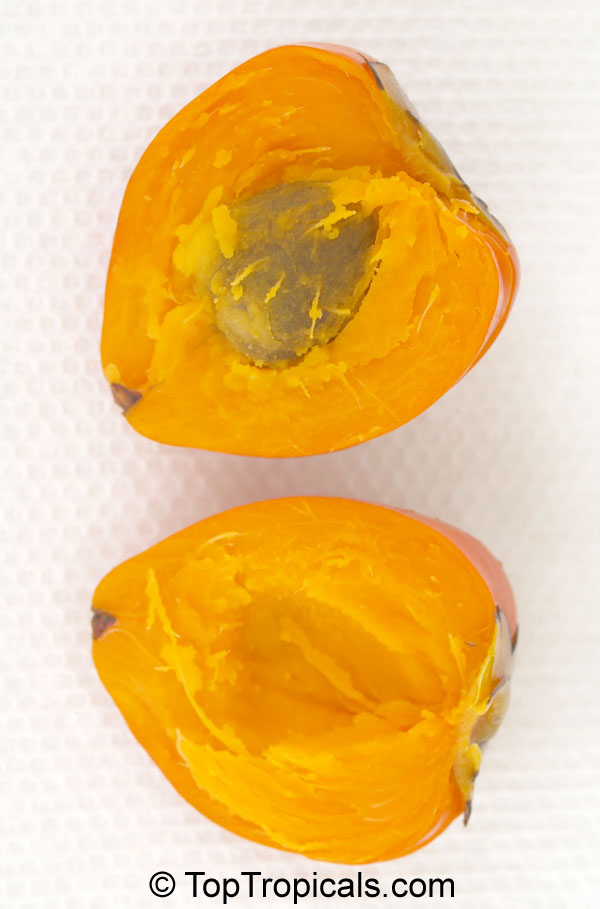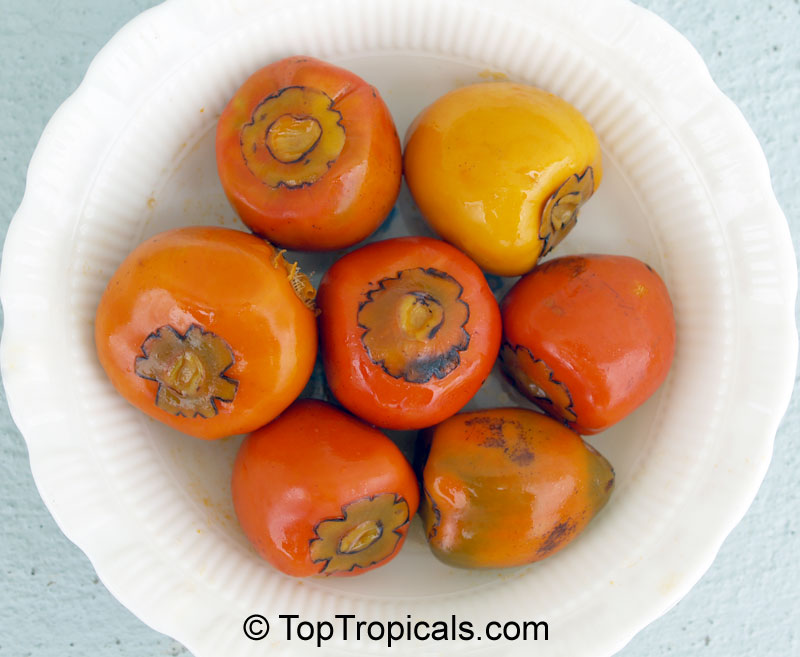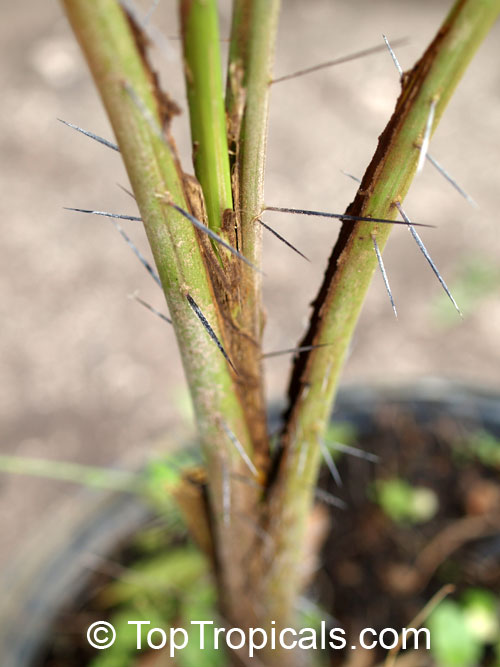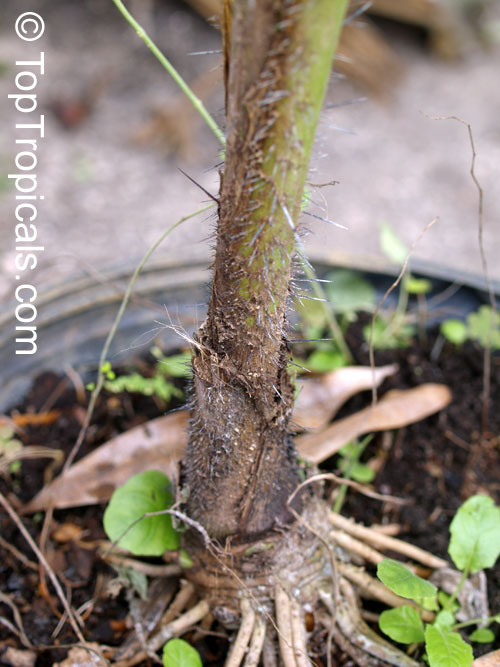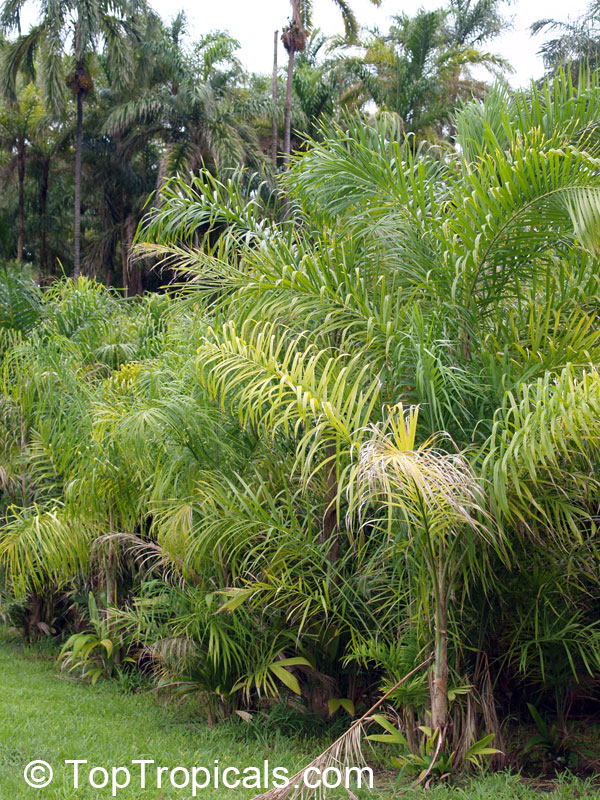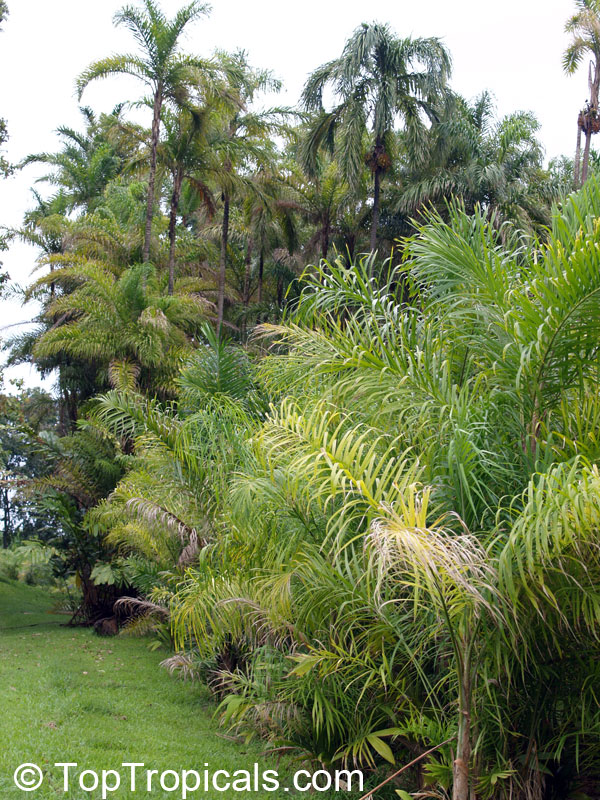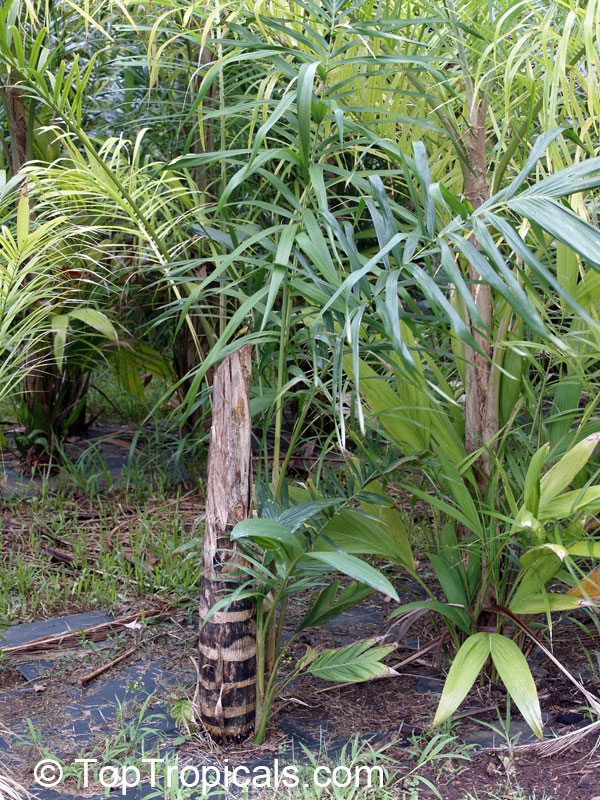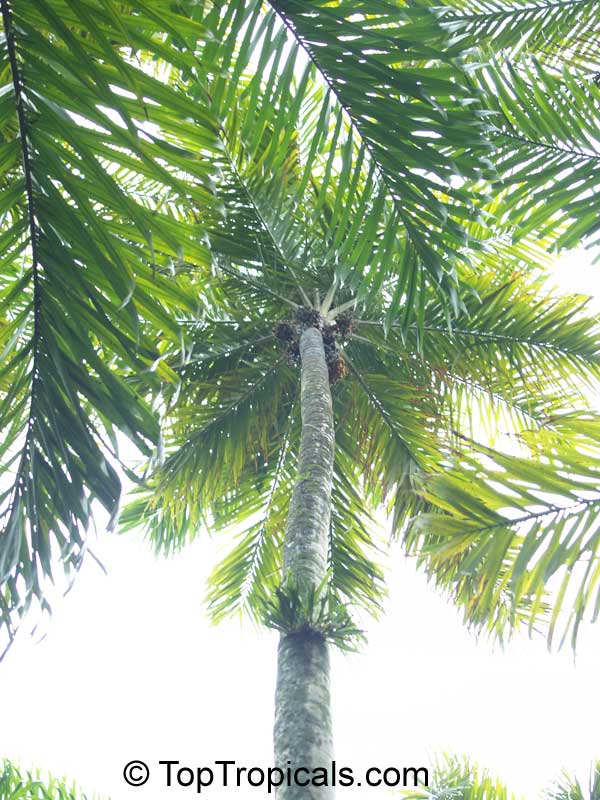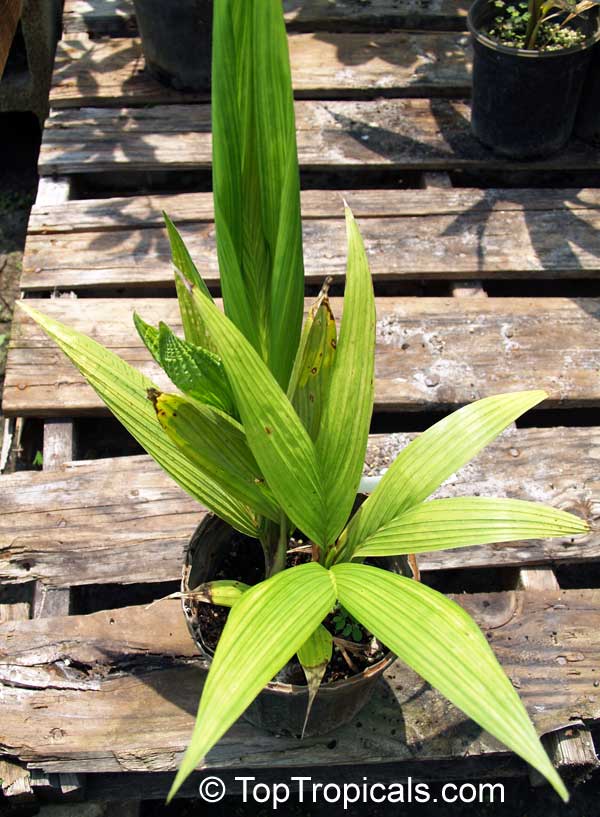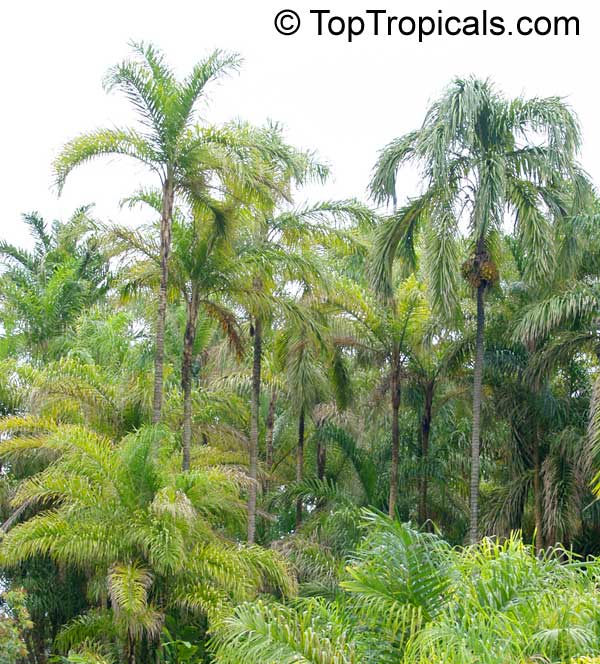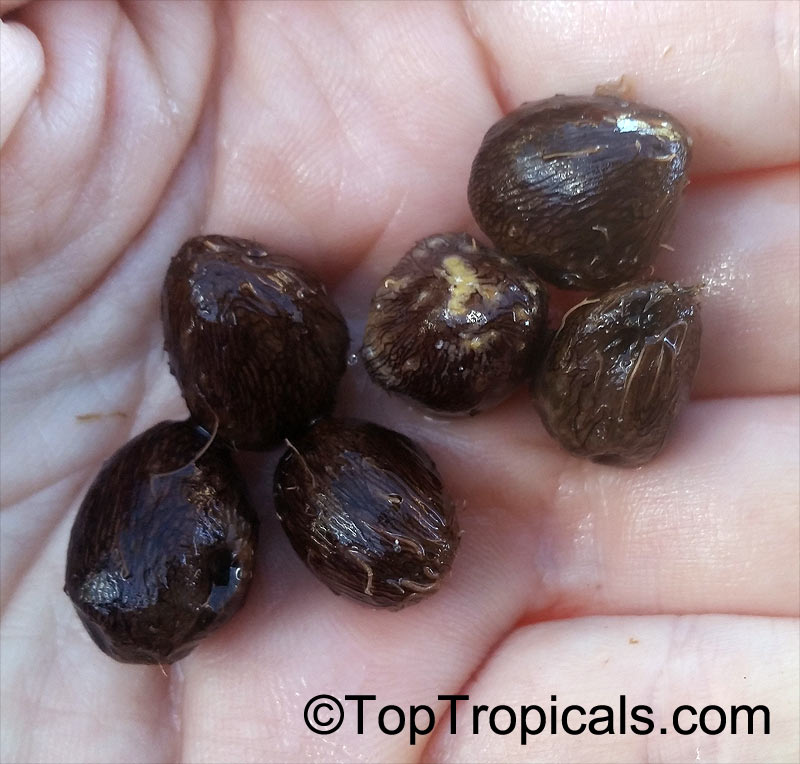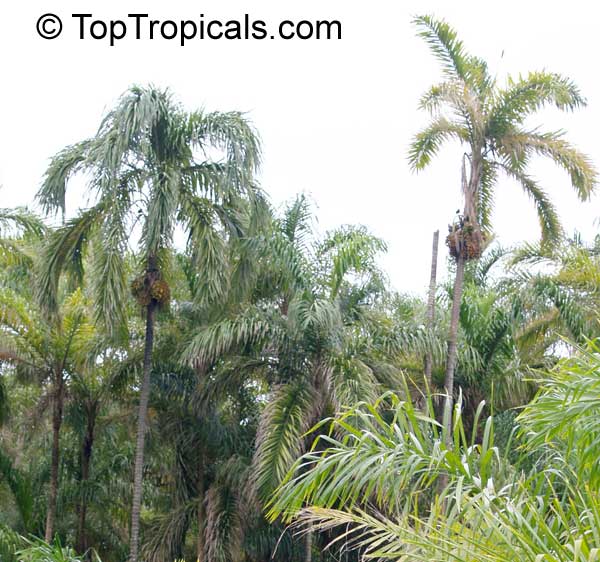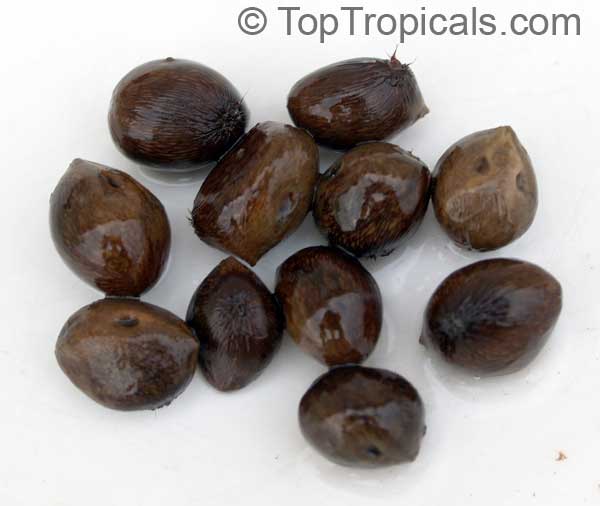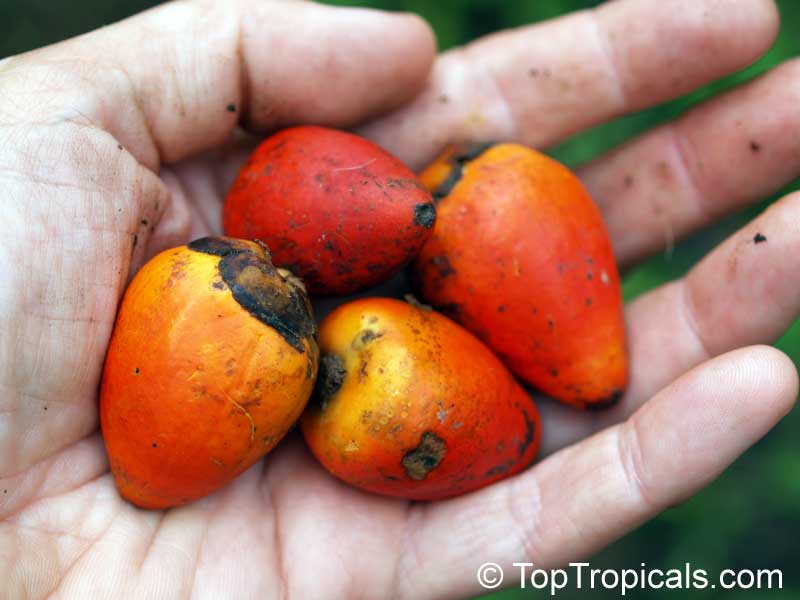Bactris gasipaes
Peach Palm, Pixbae, Pewa, ChontaduroFamily: Arecaceae / Palmae
Origin: Tropical America










Bactris gasipaes or Pixbae, or Peach Palm Fruit, is a tropical fruit native to the tropical forests of South and Central America. It grows in zones 11-12 and requires full sun to semi-shade, moderate water when irrigation possible and regular watering when natural rainfall isn't sufficient. In cold regions, the potted plant should be brought indoors over winter. When grown in pots, it should be placed in a sunny, airy area and watered frequently to keep the soil wet.
This palm is a multiple-stemmed palm with very spiny stems that can grow up to 50 ft in height. Some varieties are spineless. It is widely cultivated in the New World tropics for its edible fruit and palm hearts. Archaeological evidence suggests that people have utilized it for many thousands of years.
The Peach Palm produces an abundance of small, sweet, yellow fruit all year round that are delicious when eaten as a beverage or in salads. It can produce up to 20 lb or more of fruit on a single tree. In addition to its culinary uses, the Pixbae has many ethnomedical benefits, such as being rich in carotenoids that act as natural anti-oxidants, anti-bacterial and anti-inflammatory properties. Its juice is used to treat digestive and intestinal issues, bronchitis and to reduce fever.
Fruit is also eaten with honey, used to make compotes and jellies, or also used to make flour and edible oil. The Pixbae also has a high nutritional value since it's rich in fiber, contains Vitamin A, Thiamin, Riboflavin, Niacin , Ascorbic acid, calcium and other nutrients. Experts have confirmed that as food, it is the tropical fruit that is the most balanced and the most nourishing, as it contains more protein than the avocado, has twice the protein value of the banana and its nutritional value is comparable to the hen's egg but without the cholesterol.
Similar plants:
